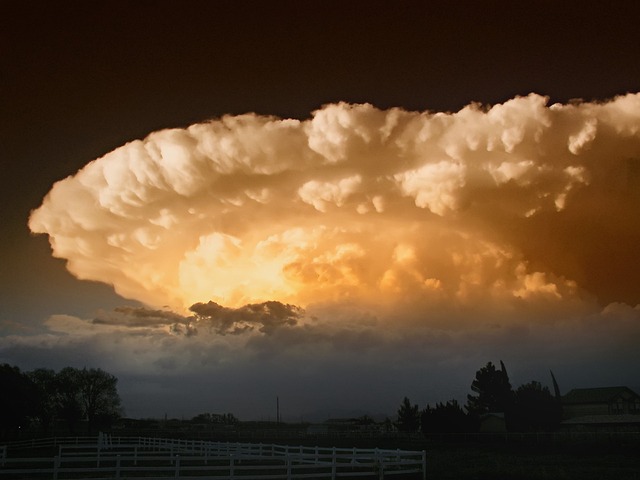Discover New Mexico's vibrant cultural tapestry and historical significance with New Mexico Travel Tips. Key sites include the ancient Puebloan structures at Chaco Culture National Historical Park, the Wild West history of Fort Sumner, and the fusion of Native American and Spanish influences in Santa Fe Plaza and Coronado Historic Site. Travelers are invited to explore Petroglyph National Monument's rock carvings and Aztec Ruins National Monument for insights into prehistoric Puebloan life. New Mexico Travel Tips suggest including these landmarks in your itinerary for a deep dive into the state's past, with experiences enriched by local festivals and events that highlight its living traditions. Don't miss the opportunity to witness the Spanish colonial legacy of Santa Fe through its adobe architecture, art scene, and culinary delights, complemented by museums and cultural events like the Santa Fe Indian Market. New Mexico's historical sites are a rich reflection of its multicultural history, offering visitors a deeper understanding of the state's complex past and unique identity, as highlighted by New Mexico Travel Tips.
Embark on a journey through time with our exploration of New Mexico’s storied past. This article offers an insightful guide to the region’s most compelling historical sites and landmarks, ensuring your travel experience is richly informative. Discover the layers of history that have shaped New Mexico’s unique cultural tapestry. With our New Mexico travel tips, you’ll gain a deeper appreciation for the area’s heritage and enjoy immersive experiences at its iconic historical locales. Delve into the heart of the region’s story and uncover the narratives that resonate within its historic walls.
- Exploring New Mexico's Rich Past: A Guide to Must-Visit Historical Sites and Landmarks
- Navigating New Mexico's Heritage: Tips for Immersive Experiences at Iconic Historical Locales
- Beyond the Surface: How Visiting New Mexico's Historical Sites Enhances Regional Understanding
Exploring New Mexico's Rich Past: A Guide to Must-Visit Historical Sites and Landmarks

New Mexico’s landscape is a canvas of history, where each site tells a unique chapter of the region’s storied past. For those eager to delve into the state’s rich tapestry of cultures and events, New Mexico Travel Tips recommend prioritizing visits to its most significant historical sites and landmarks. The state’s heritage is a mosaic of Native American pueblos, Spanish colonial missions, and frontier forts, each offering a window into the lives and traditions of their respective periods. A journey through New Mexico’s history begins at Chaco Culture National Historical Park, where ancient Puebloan great houses stand as silent sentinels to the advanced astronomical knowledge and architectural prowess of their builders. Travelers can also explore the remnants of Fort Sumner, the site of Billy the Kid’s capture and death, and gain insight into the Wild West era. For a deeper understanding of the Spanish influence, the Santa Fe Plaza and Coronado Historic Site are essential stops, showcasing the blend of indigenous and Spanish cultures that has shaped the region’s heritage. In addition to these, visitors should consider the Petroglyph National Monument, where thousands of ancient rock carvings narrate stories of early inhabitants, and the Aztec Ruins National Monument, which offers a look at one of the most significant and well-preserved prehistoric Puebloan sites. New Mexico Travel Tips advise planning your trip with these must-visit locations in mind to ensure an enriching exploration of the state’s captivating history.
Navigating New Mexico's Heritage: Tips for Immersive Experiences at Iconic Historical Locales

Embarking on a journey through New Mexico offers a rich tapestry of historical sites that invite visitors to delve into the region’s multifaceted past. To fully immerse oneself in the state’s storied legacy, New Mexico travel tips suggest starting with the UNESCO World Heritage Site at Chaco Culture National Historical Park. Here, ancient Puebloan architecture stands as a testament to the ingenuity and spirituality of its builders, with structures like Pueblo Bonito dominating the landscape. For an encompassing experience, visitors should explore the park’s self-guided trails and ranger-led tours, which provide insights into the cosmology, agriculture, and daily life of these ancient peoples.
Furthermore, New Mexico’s heritage is not confined to prehistoric times; Santa Fe boasts a well-preserved Spanish colonial history evident in its adobe architecture, vibrant art scene, and culinary traditions. Navigating the city’s historic plaza, one can appreciate the blend of indigenous, Hispanic, and Anglo cultures that have shaped its identity. Travelers are encouraged to visit the various museums, such as the New Mexico History Museum, and participate in cultural events like the Santa Fe Indian Market to gain a deeper appreciation for the region’s history. To enhance your historical exploration, New Mexico travel tips recommend timing your visits to coincide with local festivals and events, which offer authentic experiences and a chance to engage with the state’s living heritage.
Beyond the Surface: How Visiting New Mexico's Historical Sites Enhances Regional Understanding

New Mexico’s historical sites offer a rich tapestry of cultural and historical narratives that are essential to understanding the region’s complex past. For those seeking a deeper comprehension of the area beyond mere surface-level tourism, these landmarks serve as windows into the lives and legacies of the diverse populations that have called New Mexico home. Travelers can immerse themselves in the state’s multifaceted history by visiting places like the ancient cliff dwellings at Bandelier National Monument, which provide insights into the lives of the early inhabitants, or the historic sites of Santa Fe and Taos, where Spanish colonial and Native American influences are palpable. New Mexico travel tips often emphasize the importance of exploring these locations to truly appreciate the layers of history that have shaped the region’s unique identity. By engaging with the remnants of forts, missions, and pueblos, visitors can gain a nuanced perspective on the interactions between different cultures, the impact of trade routes, and the resilience of indigenous communities. Each site in New Mexico is a chapter in the broader story of the American Southwest, inviting travelers to explore not just the physical structures, but the stories, traditions, and historical events that have contributed to the region’s rich heritage.
Embarking on a journey through New Mexico reveals a tapestry of history that beckons those eager to delve into the region’s past. From the ancient cliff dwellings of the Anasazi to the opulent Palaces of the Governors, New Mexico’s historical sites and landmarks offer an enlightening glimpse into its storied heritage. With our guide in hand and New Mexico travel tips at your disposal, you’re poised to immerse yourself in narratives that span centuries. Each site visited not only enriches one’s understanding of the area but also fosters a deeper appreciation for the layers of history that have shaped its culture and landscape. As you traverse this land of enchantment, let these historical wonders serve as portals to the past, inviting reflection on the enduring legacy of New Mexico’s diverse inhabitants.
